Web scraping has become a cornerstone for businesses aiming to harness the power of data for competitive advantage. Whether it’s market research, price monitoring, or sentiment analysis, the ability to extract and process vast amounts of information efficiently is indispensable.
This article explores how web scraping is evolving in 2025, highlighting scalable strategies, validated statistics, and actionable insights to optimize your data collection efforts.
The Rising Importance of Scalable Web Scraping
The need for scalable web scraping solutions is more pressing than ever. According to Statista, global data creation is projected to reach 181 zettabytes by 2025, nearly triple the amount from 2020. Businesses that fail to implement robust data strategies risk falling behind.
Scalability ensures your data pipeline can handle:
● Increased data demands.
● Rapid changes in website structures.
● Enhanced anti-bot detection mechanisms.
To thrive, companies must adopt agile tools and strategies for seamless scalability. For example, an AI picture maker can help businesses create unique visuals from data insights, helping them stand out in a crowded market.
Challenges in Scaling Web Scraping
Scaling web scraping isn’t without its hurdles. Common challenges include:
- IP Blocking: Websites increasingly deploy advanced anti-scraping measures.
- Dynamic Content: The rise of JavaScript-heavy websites requires sophisticated tools like Playwright and Puppeteer.
- Data Quality Management: Scaling often results in unstructured or redundant data.

The cost of poor data quality is significant—$12.9 million per year on average per organization, as reported by Gartner.
Strategies for Scalable Web Scraping in 2025
1. Use Rotating Proxies
Rotating proxies remain a cornerstone of effective web scraping. By automatically changing your IP address for each request, rotating proxies reduce the risk of bans while maintaining high success rates. Providers like Ping Proxies offer scalable proxy solutions optimized for both static and dynamic websites.
2. Leverage Cloud-Based Scraping Tools
Cloud-based scraping tools eliminate the need for expensive hardware and allow you to scale operations on demand. Many platforms now offer APIs for seamless integration, enabling you to focus on data analysis instead of infrastructure.
3. Implement Anti-Bot Bypass Solutions
Advanced solutions, such as headless browsers, CAPTCHA solvers, and AI-powered anti-detection algorithms, are essential for bypassing modern anti-bot systems.

As more websites adopt bot mitigation strategies, staying ahead requires a proactive approach.
The Role of Automation and AI
Automation and AI are transforming web scraping, enabling businesses to scale while minimizing manual intervention. According to a report by McKinsey, companies that adopt AI-driven data strategies see productivity gains of up to 40%.
Key AI applications in web scraping include:
● Data Normalization: Automatically cleaning and structuring raw data.
● Sentiment Analysis: Extracting and interpreting user opinions from social media and reviews.
● Pattern Recognition: Identifying trends in large datasets.
Conclusion
In 2025, scalable web scraping isn’t just a luxury—it’s a necessity. By addressing challenges like IP blocking and data quality while leveraging automation, AI, and tools like rotating proxies, businesses can unlock the full potential of data scraping.
Ready to scale your data collection efforts? Visit Lapwing Labs to get started and transform your approach to web scraping.

